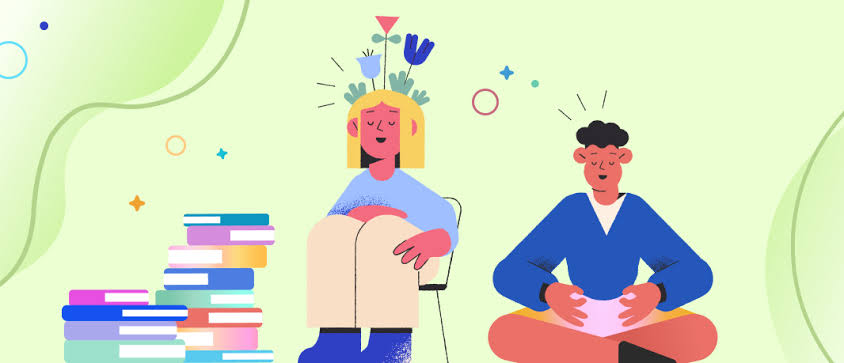Mindfulness, in its simplest form, is the practice of being fully present and aware in the moment without judgment. Within education, this approach is being increasingly recognized as a valuable tool for enhancing both teaching and learning. It helps students and educators alike manage stress, improve focus, and promote emotional well-being. As classrooms become more dynamic and diverse, mindfulness offers a grounded, inclusive way to cultivate mental clarity and resilience.
In recent years, educators across Canada and globally have been integrating mindfulness into school routines—from brief meditation breaks to full curriculum programs. These techniques are proving especially beneficial in helping students handle academic pressure, social expectations, and personal challenges. The benefits of mindfulness reach beyond academics, touching nearly every aspect of student life.
Enhancing Student Focus and Attention
One of the most immediate benefits of mindfulness in education is its impact on student attention span. Today’s learners are surrounded by digital distractions, and it can be difficult for them to stay focused during lessons. Practicing mindfulness trains the brain to maintain attention for longer periods, reducing impulsive behavior and promoting deeper engagement in classroom tasks.
Students who develop mindfulness habits often report a greater ability to concentrate, retain information, and participate meaningfully in discussions. Educators notice fewer disruptions, more thoughtful responses, and a heightened atmosphere of mutual respect.
Emotional Regulation and Stress Reduction
Academic life is filled with emotional highs and lows—from exam stress to peer pressure and personal anxiety. Mindfulness helps students acknowledge these feelings without becoming overwhelmed by them. Instead of reacting impulsively, they learn to pause, breathe, and respond with intention.
This emotional regulation contributes significantly to mental health. Schools that incorporate mindfulness often see reduced levels of anxiety, depression, and even aggression. As emotional intelligence improves, so does empathy, compassion, and interpersonal connection among students.
Mindfulness also gives students the tools to manage test anxiety or social fear. When practiced regularly, it creates a buffer against negative thought patterns and reduces the intensity of stressful experiences.
Supporting Teacher Well-Being and Classroom Environment
The benefits of mindfulness aren’t limited to students. Teachers, too, deal with high levels of stress, workload, and emotional exhaustion. Mindfulness programs for educators can improve self-care, patience, and job satisfaction. A mindful teacher is better equipped to handle disruptive behavior, provide emotional support, and create a calm, responsive classroom atmosphere.
When teachers model mindfulness themselves, it becomes a natural part of classroom culture. Students are more likely to take it seriously, and the overall emotional tone of the room becomes more stable and welcoming.
Promoting Social and Academic Growth
Mindfulness improves more than just mood and focus—it can also influence academic performance. Research shows that students who regularly engage in mindfulness activities tend to score better on standardized tests and perform more consistently across subjects. This is largely due to their increased ability to manage distractions, regulate emotions, and sustain effort over time.
Socially, mindfulness enhances group dynamics. Students become more aware of how their actions affect others, leading to fewer conflicts and better collaboration. In group projects or classroom discussions, mindful students tend to be more inclusive, respectful, and open-minded.
Cultivating Self-Awareness and Lifelong Learning Skills
Self-awareness is a crucial skill in both academic and personal development. Through mindfulness, students begin to understand their own thoughts, feelings, and learning styles. This kind of self-reflection allows them to set realistic goals, acknowledge mistakes without shame, and stay motivated even when progress feels slow.
Mindfulness teaches learners how to learn. It encourages metacognition—the ability to think about one’s own thinking—which enhances problem-solving, critical analysis, and creativity. As education increasingly emphasizes soft skills and lifelong learning, mindfulness becomes a valuable foundation.
Mindfulness Practices Suitable for the Classroom
Schools don’t need extensive resources to implement mindfulness. Even simple, daily practices can have profound effects. Here are some techniques commonly used:
- Breathing Exercises – Short sessions where students focus on deep breathing can calm nerves and reset attention.
- Body Scans – Guiding students through awareness of their physical sensations helps them ground themselves in the present.
- Mindful Listening – Exercises that encourage silent, focused listening improve attention and social interaction.
- Gratitude Journals – Writing down things they’re thankful for fosters positive thinking and self-awareness.
- Mindful Movement – Gentle stretching or yoga-inspired movements improve physical awareness and reduce restlessness.
These can be practiced at the start of the day, before exams, or after recess—any time students may need to recentre.
Challenges and Considerations
Despite its benefits, implementing mindfulness in schools comes with some challenges. Not all students respond the same way to stillness or meditation, and cultural or personal beliefs may affect acceptance. It’s important that educators introduce mindfulness with sensitivity and inclusivity.
Training and consistency are also crucial. Without proper guidance, mindfulness may be misunderstood or practiced superficially. Schools that invest in teacher training and integrate mindfulness into broader well-being programs tend to see the greatest results.
Conclusion
Mindfulness in education is more than a passing trend—it is a transformative tool that strengthens students academically, emotionally, and socially. It creates calmer classrooms, more thoughtful learners, and healthier school communities. In an age where stress and distraction are common, mindfulness offers an accessible and impactful solution to nurture the whole student.
By integrating mindfulness into daily routines and academic life, educators and learners alike stand to gain a richer, more balanced experience of education—one that promotes not only academic achievement but also mental clarity, empathy, and lifelong resilience.



